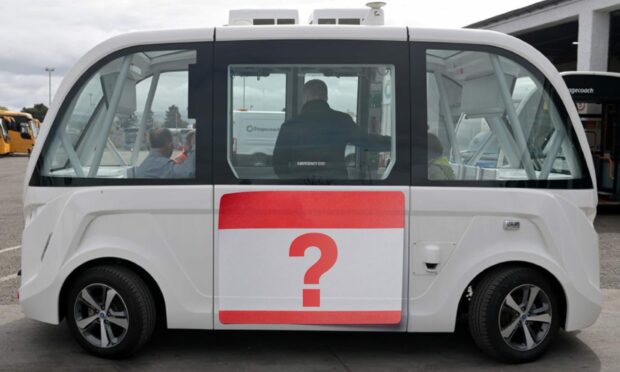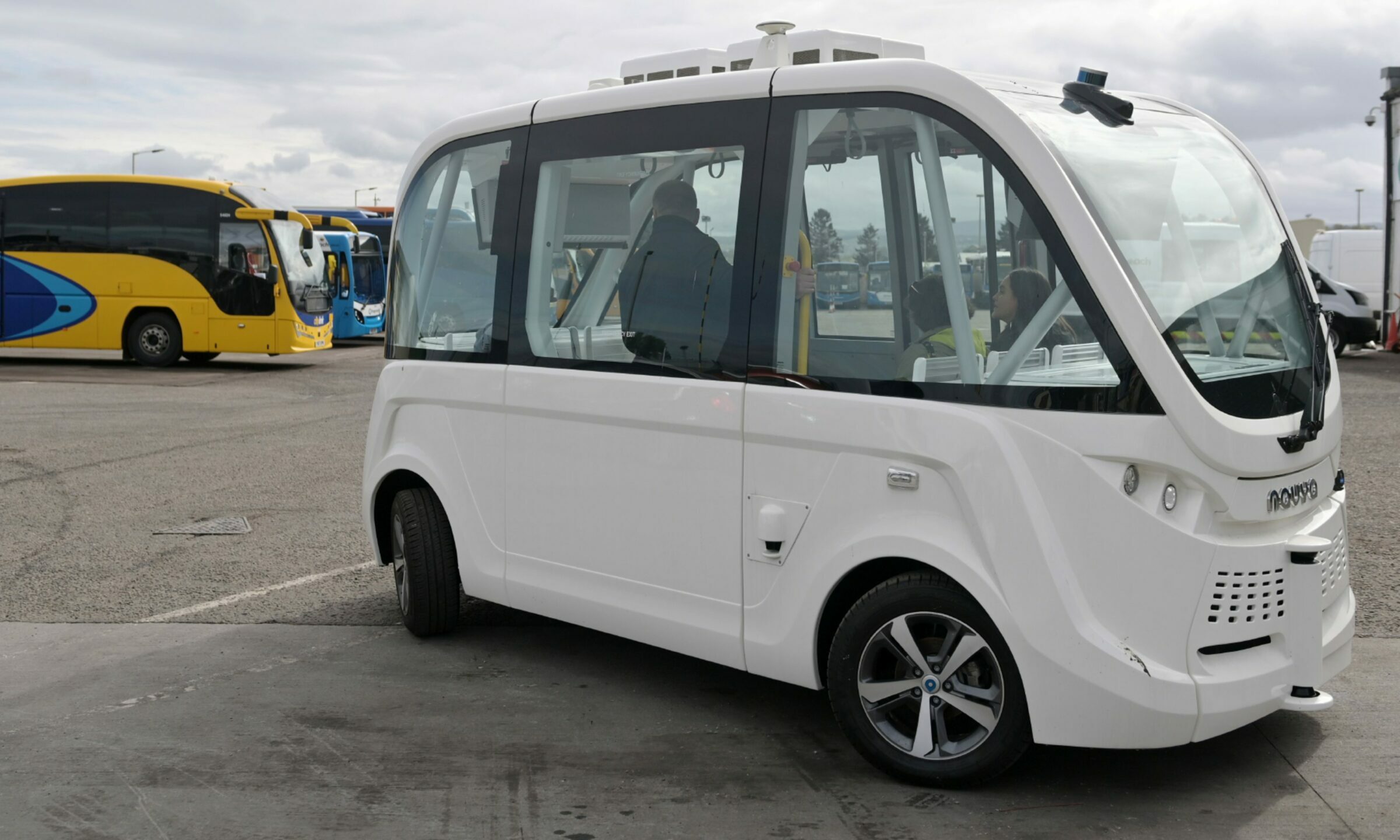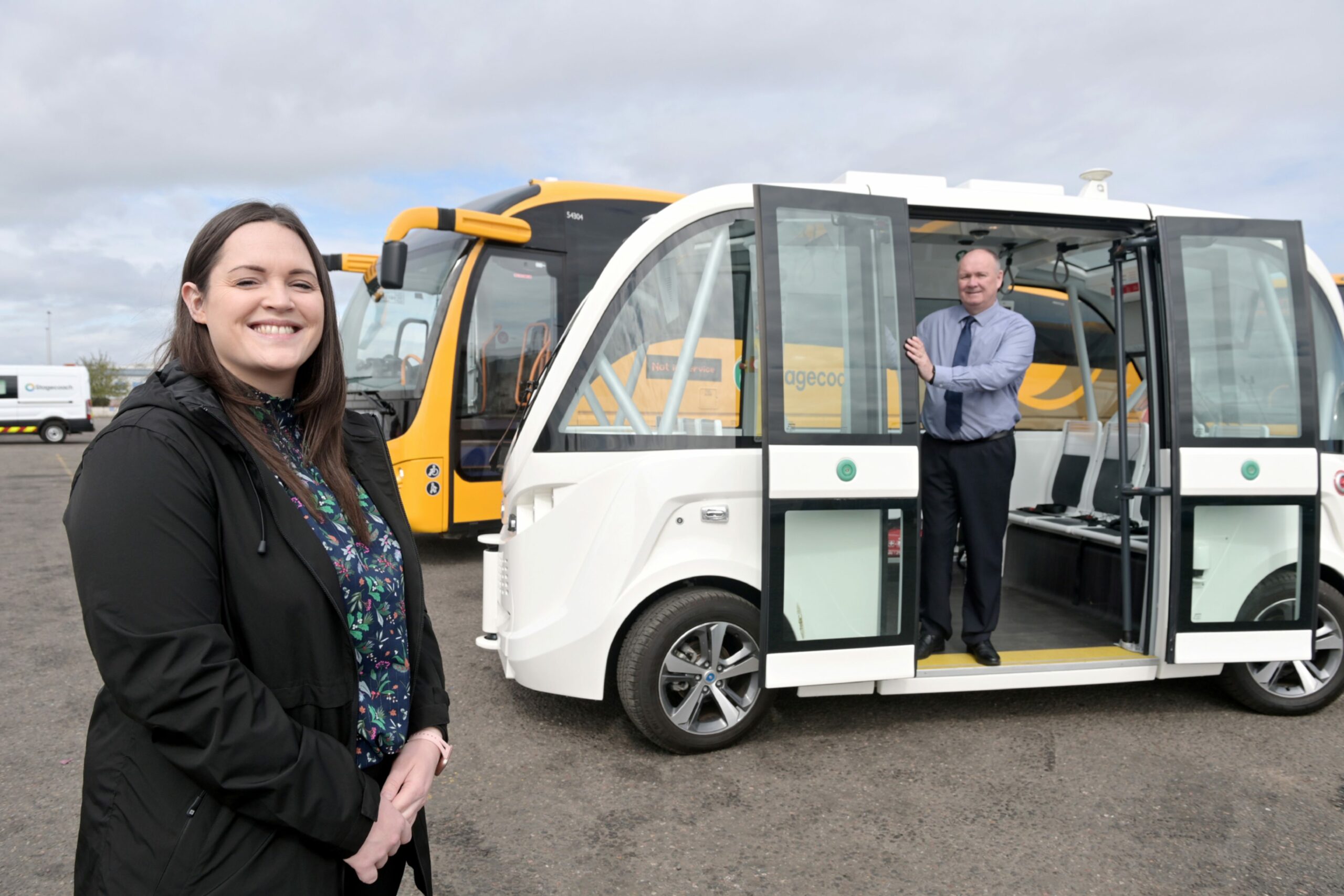Transport officials have launched a competition asking the public to name the new self-driving bus in Inverness – with an £800 robot lawnmower the top prize.
The Navya electric vehicle will soon be shuttling students and staff between Inverness Campus and Inverness Retail Park at 15mph.
The French-built machine can take 15 passengers and run for nine hours on a charge.
Now, it needs a name.
How does the self-driving bus work?
It does not have a steering wheel, driver’s seat or brake pedals but there are two ways it can move.
The first is done by an onboard computer whereby the bus is controlled by a satellite navigation system with sensors on the vehicle which propel it forward and pull it to a stop when it detects obstacles.
But despite having the capability to drive autonomously, a driver must be on board ready to take over.
It uses the same controller you would use for your Xbox
On the Inverness driverless bus, this involves the use of the same controller you would use for an Xbox games console.
This is the second way of getting the self-driving bus to operate – manual mode.
How to name the driverless bus
Transport officials now want to give the Inverness driverless bus a name and are looking for submissions from members of the public until June 1.
If you can think of a good name click here to enter.
And it’s not just the prestige of having your name chosen for the bus which is up for grabs.
Smart technology will be given away to the winner and runners-up.
- 1st prize: FLYMO EasiLife Robot Lawn Mower
- 2nd prize: EUFY Robot Vacuum Cleaner
- 3rd prize: Smart Speaker
Who’s behind self-driving scheme?
The Highlands & Islands transport partnership (Hitrans) secured EU funding of nearly £150,000 to lease the self-driving vehicle until spring.
Hitrans are being supported by Stagecoach Highland in a bid to find out how this kind of self-driving bus could be integrated into the region’s public transport system.
The tale of Boaty McBoatface
Crowdsourcing the names for new vehicles has become a trend with the intention to help communities feel involved and create a sense of ownership.
But it can backfire.
In 2016, an online naming poll asked the public to name a research vessel to be operated by the British Antarctic Survey.
A BBC Radio Jersey presenter joked it should be called “Boaty McBoatface”, and the gag became popular with the UK public.
The name ended up as the most popular choice, with 124,109 votes, but ultimately it was named the RSS Sir David Attenborough.




Conversation